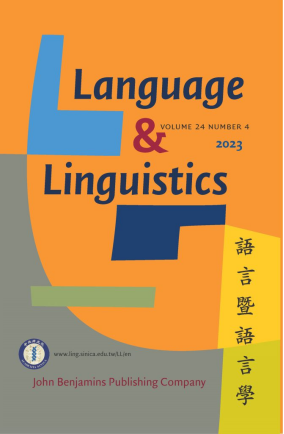本刊《语言暨语言学》(Language & Linguistics),(ISSN 1606-822X),SSCI与A&HCI双检索收录,为亚太地区语言学领域顶级期刊,实行“五年三轮”匿名评审制,近五年平均录用率低于12%,以学术严谨性著称。
一、论文简介
该文《The <bei+verb+jiangqu> construction in pre-twelfth century Chinese: Its evolution and transcription》,于2017年11月投稿,2022年7月接收,2023年12月印刷。

该文聚焦一极罕见的中古汉语字串「被、动词、将、去」,首次系统分析了其自汉迄宋的演变路径和机制。是文将该用法判定为一种新的被动结构,提出使用「被+动+将去」公式替换传统「被+动+将+去」的转写方式,并延伸讨论了如何切分汉语字串这一长期未被关注的课题。相关理论探讨揭示了中古汉语发展的复杂性,表明汉语字串的切分直接影响研究结果,对研究现代汉语也还有一定的借鉴意义。
二、作者简介

孙建强,台州学院人文学院副教授、硕士生导师。2012-2018年就读于荷兰莱顿大学,获博士学位,主要研究领域为中国古代史、唐宋景教、敦煌学、语言学、中外文明交流、海外中国学。
三、论文目录
1.Introduction
2.Data, methods, terms, etc
3.The pre-twelfth century {bei + verb + jiangqu} usage
3.1 The fifth century
3.2 The seventh century
3.3 The eighth century
3.4 Further developments, ninth through eleventh centuries
4. Implications: Divide Chinese strings composed of a few characters
4.1 The issue and the importance
4.2 How to divide the bei passive strings containing verb, jiang, and qu
4.3 Divide the active strings containing verb, jiang and qu
4.4 Four guidelines for dividing the Chinese strings
4.5 The application scope of the observations
5. Conclusions
Acknowledgements
Notes
Abbreviations
References
文:孙建强/图:孙建强/审核:叶永/责任编辑:金柔雅